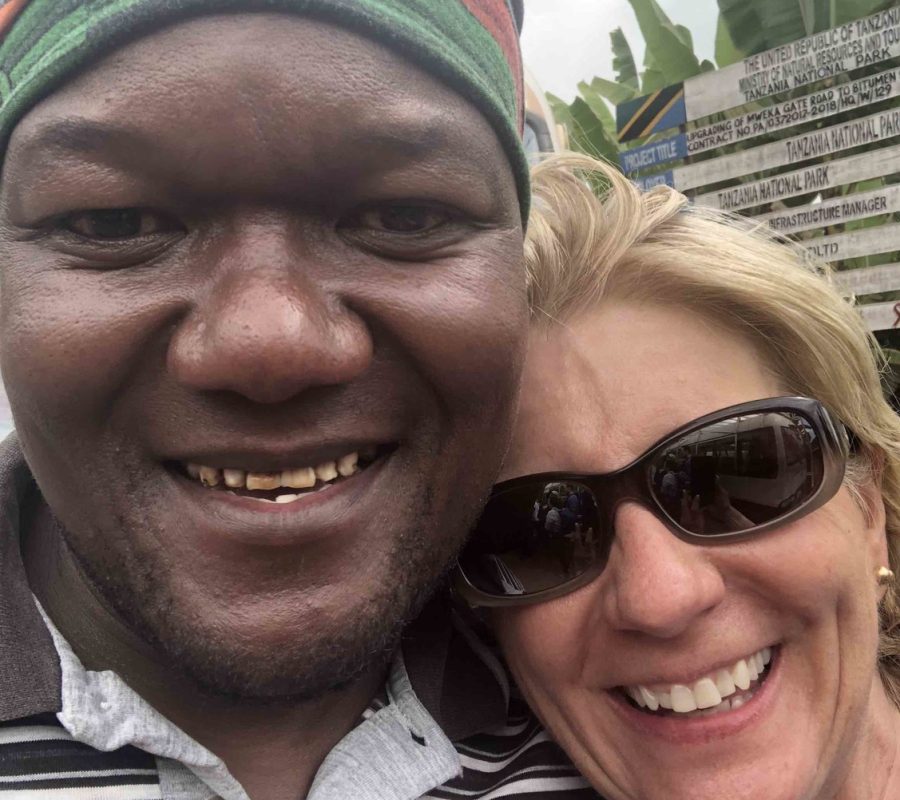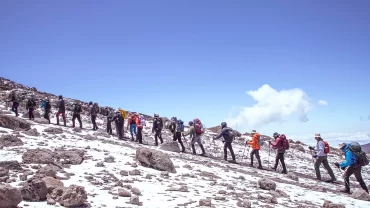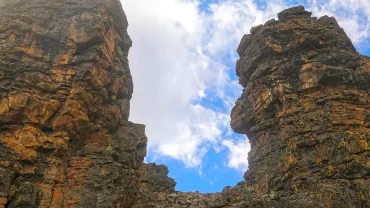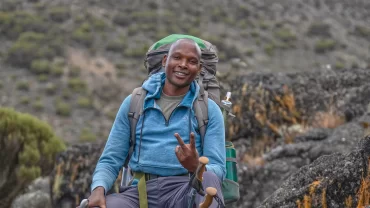“The greatest leader is not necessarily the one who does the greatest things. He is the one that gets the people to do the greatest things.” – Ronald Reagan, former U.S. President
The early hours of February 13th marked an important personal milestone. I had made it to the summit of Mt Kilimanjaro.
With an elevation of 19,341 feet, Kilimanjaro is one of the elite Seven Summits – the highest mountains on each of the seven continents. As the sun began to rise, I stood atop the highest mountain in Africa and the tallest freestanding mountain in the world. Every year, approximately 35,000 people attempt the summit. Only about two-thirds succeed. While climbing Mt Kilimanjaro does not require special mountaineering equipment, all the trekking routes are strenuous, and problems related to altitude keep many climbers from accomplishing their goal to reach the top.
My chosen journey was the Machame Route. It is a six-day trek through five major ecological zones across rugged and sometimes very steep sections and rock scramblings. I climbed with eight other people whom I only met upon arriving in Tanzania. There were an American father and his two grown sons and daughter, a Canadian husband and wife team – both of whom were very experienced hikers, and two other single women from the U.S. Our guide was Dismass Mariki, a local Tanzanian who had made the journey to the summit of Kili more than 200 times.
I’m still not sure what compelled me to set out to hike Mt. Kilimanjaro. I most certainly am not an experienced hiker.
As I stood on top of this natural wonder – and as I reflect on the journey now – I am struck by how much this amazing experience taught me about myself and about how much I really can push myself physically and mentally. The experience also gave me the unexpected opportunity to relearn some lessons about leadership. I credit them to Dismass.

Dimass’ Simple Leadership Rules
All too often, the title of ‘leader’ is reserved for those in the upper echelons of business or government institutions. The truth is, leaders come in all shapes and sizes. Leadership is not a title; it’s a state of being and acting. Great leaders succeed through authenticity and humility and with the courage to see and share themselves honestly, deeply, and truly.
Dismass is one of these leaders. He showed courage and determination to step up and take responsibility to get my fellow hikers and me to the summit and back safely. His actions inspired deep trust, followership, and respect for him. Dismass never shared a list of leadership rules, but his actions inspired us to follow him and reminded me of what real leadership looks like.
Rule One: Remember that leading people is a human-centric endeavor
The day before we began our trek up the Machame Route, Dismass took us all to the Ngongongare National Park for an easy hike. He told us the activity would be a chance to shake out our equipment and begin the process of acclimation. As we hiked almost five hours that day, Dismass was carefully and quietly observing us. He was taking in our skill level, our strengths, our comfort with hiking and our equipment, and (most likely) our weaknesses. After we returned from our hike that day, he personally conducted individual gear checks to ensure we each had what we needed for the trip. In hindsight, I’m sure he was making necessary adjustments to the trek plan based on the collective capability of our group.
Leader Lesson:
To ensure success for everyone, a leader meets each individual in the group where they are and adjusts the journey based on the collective.
Rule Two: Crystalize the journey down to the few foundational requirements for success.
Many people have successfully summited Mt. Kilimanjaro with little previous hiking experience. (I am proof of that.) Just as many extremely fit individuals have succumbed to the effects of the altitude. For most, successfully reaching the top comes down to three simple commitments – hydrate, eat and take your time.
Dismass constantly reminded us to drink our water, eat all the food his team cooked for us and to poley poley (‘walk slowly’) to conserve energy as we ascended to higher altitudes. Every time we stopped for a rest break, he personally checked how much water we had drunk. At meals, his team would assert gently we needed to eat more.
Leader Lesson:
Knowing the few most important requirements for success and ensuring the team follows through on them is a must.
Rule Three: Communicate the points that need to be known at the times they need to be known.
As a group, we were not at a loss for questions about summit day – we all wanted to know what it would be like and how hard would it be. We were anxious to know everything well in advance of when things would actually happen. Our focus was the summit – and as a result, we often failed to consider the steps in front of us. Dismass had made the trip hundreds of times. He knew the pitfalls and hazards of the journey. He would calmly deflect our questions to a more appropriate time by telling us he would make sure we knew everything we needed to know when we needed to know it. At night, during dinner, he would share his wisdom of experience by telling us stories of past treks with others. Inside each of these stories was an important message – if we listened, we would be prepared for the next day and the challenges we would face.
Leader Lesson:
Once a goal is set, it is important to keep the team focused on achieving what is in front of them rather than distracted by what might happen in the future.
Leadership is an interesting word whose meaning tends to be diluted by over-use. It describes a diverse range of actions, attributes, behaviors, and positions. Run a search on Amazon using the term “leadership,” and you’ll get over 60,000 results. All that chatter on the topic might make it seem complicated, it really isn’t. As Dismass proved, leadership is fundamentally the ability to behave with humility and wisdom, to engage authentically, and to inspire others toward achieving a purpose they’d never accomplish on their own.
Where have you experienced real leadership? What did it enable you to do?






Comment (0)